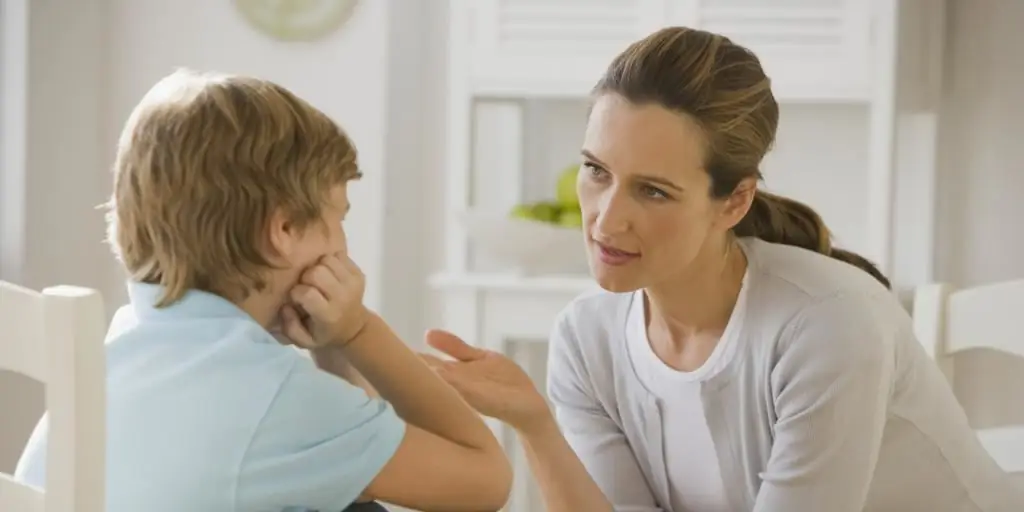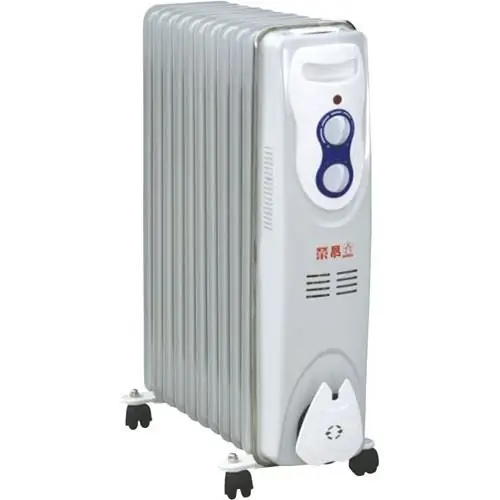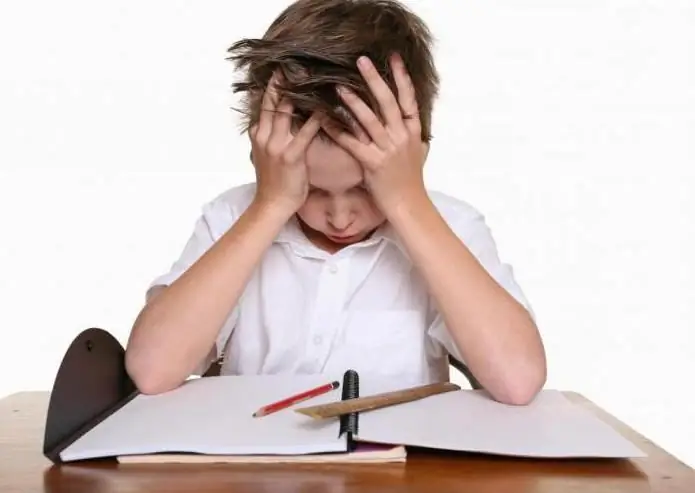2025 Author: Priscilla Miln | [email protected]. Last modified: 2025-01-22 17:55:26
Walking outside is a pleasant and rewarding pastime. To learn about the world around us, to communicate with children and adults - it's so great! But the weather does not always make us happy, so mothers worry about how to dress their child correctly for the street.

Wrap up or not?
Grandmothers are used to the fact that children need to be wrapped up. Steam does not break bones - this is a common folk proverb. But modern doctors have definitely established that it is more necessary to be afraid of overheating. Active children are hot all the time, they sweat easily, unbutton their clothes, take off their hats, and just here there is a greater risk of catching a cold. Overheating is stressful for the immune system, and a little exposure to cold is usually not harmful.
So, let's find out how to dress the child according to the weather so that he is comfortable and the walk brings joy.
Criteria for choosing clothes
1. The age of the child (babies are dressed differently than "joggers" or schoolchildren).
2. Mobility while walking (in a wheelchair, in mother's arms, mostly walking, running or cycling).
3. Temperature outside.
4. Atmospheric phenomena (sun, wind, snow, humidity).
3. Baby's personality (he personally expresses his feelings about the comfort temperature, the baby is almost always hot or cold when you dress him).
Age
Babies are more sensitive to temperature changes. For them, the danger is both overheating and hypothermia. How to dress a child for a walk? And how to determine that the clothes do not fit? If the child is uncomfortable, he will most likely report it by crying. Periodically, you need to touch the back of the head and back of the child to understand if he is hot. As a rule, young mothers and grandmothers tend to overheat the baby, and not to overcool. A light summer breeze is no reason to wear a warm hat. If after a walk it turns out that the baby has wet hair and back, you obviously overdid it with clothes.
Babies 1-3 years old are already more resistant to changes in atmospheric conditions and better regulate their body temperature. But even on them you can often see “a hundred clothes without fasteners.”
Preschoolers 3-5 years old are even more perfect in terms of thermoregulation, moreover, as a rule, they are very mobile. True, if the child is hot or cold, he will decisively declare this. Therefore, it is already easier for you to determine how to properly dress your child. The older the children, the easier it is to figure out their individual sense of comfort temperature.
Schoolchildren and teenagers are a special topic. Here another problem already arises, because it is cooler to walk in winter without a hat, not to wear thermal underwear or warm leggings. Both boys and girls are at risk of developing acute and chronic diseases if they dress inappropriately for the weather. That's whyparents should clearly and delicately explain what hypothermia threatens. Offer bright accessories (hat, scarf, mittens) for the choice of a teenager, as well as stylish thermal underwear, and the problem will be solved. Perhaps your child's friends will follow suit.

Mobility while walking
If your baby is in a stroller and sitting/lying, they will need an extra layer of clothing or a blanket. If you carry your baby outside in a sling or backpack, some of your warmth will be transferred to him, so additional wraps are not needed. A sling jacket that hides the baby inside will generally allow you to dress him in warm clothes for the house and a hat according to the weather, because only his head will be “on the surface”.
"Walkers" and "joggers" require lightweight clothing. Even if you are cold, you can be sure that the child is warm. For your own peace of mind, periodically check how comfortable the baby is. But if he enthusiastically explores the world or runs after friends, he is probably fine.
How to dress a child according to the weather if he is engaged in an active sport? He will need lightweight clothing with a membrane layer that removes excess heat to the outside.

Outboard temperature
The most comfortable temperature is about 20-23 degrees Celsius. If the temperature outside is below -15, it is better to refrain from walking. Heat above 30 degrees in the shade is also very dangerous.
Other temperature intervals - from minus 10 to plus 28 - are quite good for a walk with the rightmatching clothes.
Atmospheric phenomena (sun, wind, snow)
Strong winds and high humidity cause us to freeze faster. You will need an extra layer of clothing and a windproof jacket. Heavy snow is dangerous because a child can gradually wet clothes and shoes, so keep an eye on the weather forecast if you go far from home.

The sun and calm, on the contrary, are more favorable for a walk, and extra layers of clothing can only get in the way.
Personal Features
Attentive mother will notice if the baby constantly complains of heat or cold. "Cold" children are a rarer occurrence. Apparently, because they are wrapped up all the time, and they do not suffer from this. But if you hear “I’m hot!” All day long, then you got a “warm-blooded” baby. How to dress a child for the weather in this case? If you see that he is objectively more comfortable without numerous sweaters, leave it as it is, do not put on extra layers. True, you need to be prepared for the fact that the grandmothers at the entrances will shake their heads when they see your child "light". But remember that overheating is more dangerous, and only you are responsible for the he alth of the child.
Cold or overheated?
Most often, mothers worry about whether the child is cold.
Signs of hypothermia:
- screaming, crying, active movements;
- very cold feet (maybe the boots have become small, and the feet freeze quickly);
- pale skin.
How to check if the baby is warm? If the nose, cheeks, handshands and butt are cool, everything is in order. If it's very cold, it's time to warm up.
Overheating is thirst, warm face (in winter), sweaty and hot back and neck.
What to do with hypothermia and overheating
A frozen baby can be hugged and warmed. If he can run, start a fun game of jumping and waving his arms. When the baby is warm, dress him a little warmer.
Overheating is a more dangerous condition. It is necessary to remove excess layers of clothing and restore water balance, offer water, juice, compote. In summer, you can wipe your forehead and hands with water.
If overheating or hypothermia occurs, it is best to take the baby home.
Winter baby clothes
With the approach of cold weather, parents are thinking about how to dress their child correctly in winter. On the one hand, there is a temptation to stay at home as much as possible. Less risk of catching a cold and catching an infection. But this is a delusion. It is fresh air and movement that help the baby strengthen immunity and reduce the risk of disease to a minimum. Modern winter clothes for children are very comfortable and functional, and you can walk with pleasure.
The simplest rule is to focus on the temperature shown by a street thermometer.
In the minus 5-plus 5 range, the following layers will suffice: thermal underwear (tights and a long-sleeved T-shirt), insulated overalls, thin socks, warm boots with a wool insole, warm gloves and a hat. Winter clothing for children should be light in weight and warm.

If on the street5-10 degrees below zero, you need to add one layer of clothing (knitted turtleneck) and woolen socks.
How to dress a child in winter if it's minus 10-15 outside? We put on an additional fleece underwear (bike and panties). Woolen socks can be thicker, if desired, replace shoes with felt boots. Choose a jumpsuit on a heater made of natural fluff with a deep hood. Warm mittens will keep your hands warmer than gloves.

In severe frost it is better not to go outside. But if there is such a need, try to reduce the time of the walk and protect the baby's skin with a special oil-based cream.
How to dress in winter and autumn - general principles
1. Layering. Multiple layers of clothing keep you warm better. Thus, in cold weather, a T-shirt with a sleeve plus a turtleneck is better than one sweater.
2. Impregnation from wind and water. For outerwear, this is necessary, because it is very easy to freeze in a wet jacket. And if you allow your child to wallow in the snow or walk in the rain, buy waterproof overalls and shoes.

3. Traffic. If the baby is actively moving, consider this when choosing clothes.
4. Control. It is often difficult for parents to immediately determine how to dress their child according to the weather. But if you regularly check it after the street, it will become clear how well the choice was made with clothes. If the baby is sweaty and wet, you need to reduce the layers, if the limbs are cool, you can add.
5. Convenience and freedommovement. These are the main distinguishing features of modern clothing for the cold season.
How to dress a child in autumn and winter? We hope you now know the answer to this question.
Recommended:
A child of 3 years old does not obey: what to do, the psychology of the child's behavior, the causes of disobedience, advice from child psychologists and psychiatrists

It is quite a common situation when a child of 3 years old does not obey. What to do in this case, not all parents know. Many of them try to calm the child with persuasion, shouting and even physical impact. Some adults just go on about the baby. Both of them make mistakes. Why does a three-year-old child not obey and how to stop it? This post will answer these questions
Oil radiator - always warm weather in your home

With the onset of cold weather, you always want warmth and comfort. After all, in a warm room it is pleasant both to work and relax. And with what you can create warm weather in the house? Of course, with the help of heaters. Which one you choose depends on personal preference. However, one of the main types of heaters is an oil cooler
The best children's cold medicine. How to help your child with colds and flu

Immunity in children is much weaker than in adults. Therefore, colds are much more common in them. Today we will consider children's cold medicines. This will help young parents to respond correctly to the symptoms of the disease
Child does not want to learn: advice from a psychologist. What to do if the child does not want to study

Sending their inquisitive kids to school, many parents do not even suspect what difficulties they will face in the near future. The pedagogical practice of recent years shows that the number of children who do not gravitate towards learning is growing rapidly from year to year
Child does not study well - what to do? How to help a child if he does not study well? How to teach a child to learn

School years are, without any doubt, a very important stage in the life of every person, but at the same time quite difficult. Only a small part of children is able to bring home only excellent grades for the entire period of their stay in the walls of an educational institution

